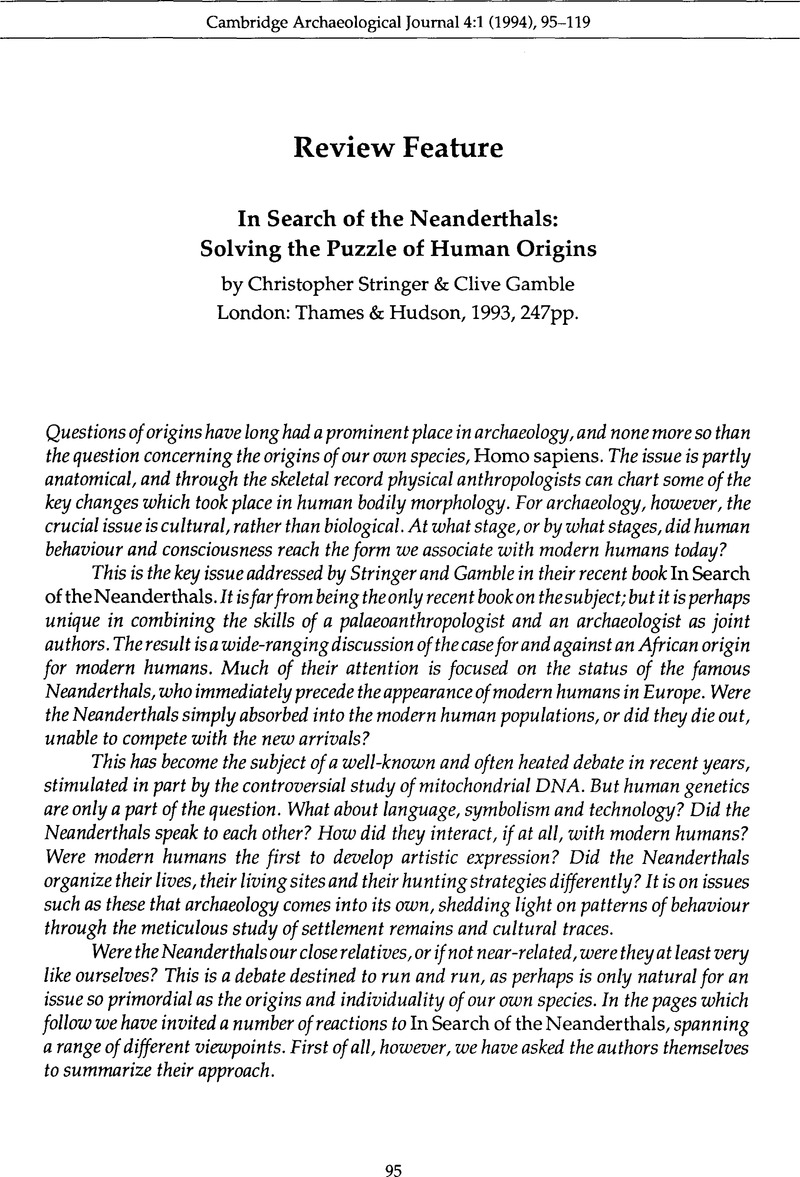Crossref Citations
This article has been cited by the following publications. This list is generated based on data provided by Crossref.
Knight, Chris
Power, Camilla
and
Watts, Ian
1995.
The Human Symbolic Revolution: A Darwinian Account.
Cambridge Archaeological Journal,
Vol. 5,
Issue. 1,
p.
75.
Pettitt, P.B.
Bronk Ramsey, C.
Hedges, R.E.M.
and
Hodgins, G.W.L.
2000.
AMS radiocarbon dating at Oxford and its contribution to issues of the extinction of Neanderthals and the spread of Homo sapiens sapiens across Eurasia.
Nuclear Instruments and Methods in Physics Research Section B: Beam Interactions with Materials and Atoms,
Vol. 172,
Issue. 1-4,
p.
751.
2014.
Thin on the Ground.
p.
365.
Borel, Antony
Ajzenherc, Yohan
Moncel, Marie-Hélène
Saint Jalme, Michel
and
Krief, Sabrina
2016.
Do Orangutans Share Early Human Interest in Odd Objects?.
Current Anthropology,
Vol. 57,
Issue. 6,
p.
828.
Fuks, Daniel
Amichay, Oriya
and
Weiss, Ehud
2020.
Innovation or preservation? Abbasid aubergines, archaeobotany, and the Islamic Green Revolution.
Archaeological and Anthropological Sciences,
Vol. 12,
Issue. 2,





